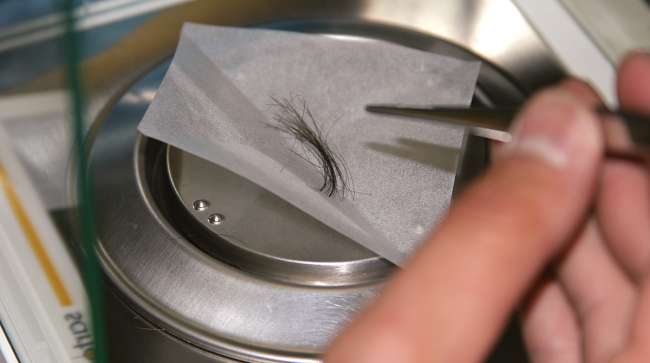Senior Reporter
ATA Meets With OMB to Discuss Hair Sample Testing Rule

[Stay on top of transportation news: Get TTNews in your inbox.]
A new federal drug-testing law for truck drivers that has been held up at the White House for more than a year — and which traces its origins back years longer — may finally be poised for advancement, according to an executive from American Trucking Associations who recently met with officials from the Office of Management and Budget.
“Our rationale for the meeting was that the guidance has been sitting around for a long time, and we’d like to get it done,” said Bill Sullivan, ATA’s executive vice president of advocacy, who headed a virtual meeting of several ATA employees with OMB officials earlier this month.
“The feeling we got from OMB was, ‘It’s been here too long already. We know it has to get done, and we hear you.’ ”

Sullivan
It was more than four years ago that Congress passed a law mandating a drug-testing rule for truck drivers and certain federal employees using hair samples, and the rule has been on hold at OMB for 13 months amid rumored internal disagreements among various federal agencies and some unions potentially affected by the complex hair testing guidance. OMB generally attempts to review a rule for up to 90 days before sending it back to an agency with questions, suggestions or approval.
The ATA meeting represented a last-ditch effort to get things moving prior to the November elections, Sullivan said. “It felt to me that they are getting close to doing something,” he said.
While a number of mostly large motor carriers are using hair testing, and having great success with the test results, they must also administer urine sample tests. That’s costly, and difficult for smaller carriers to afford, Sullivan said.
In its seven-page presentation to OMB officials, a copy of which was obtained by Transport Topics via a public government website, ATA made its case for ensuring that the hair-testing rule is an alternative drug test — one that can be performed in lieu of a urine test, which is currently the sole Department of Transportation authorized drug test for drivers and other transportation employees.
Some points made by ATA:
- Urinalysis typically detects drug use within three to seven days; hair testing, 90 days.
- Hair sample collection is simpler and cheating is next to impossible.
- On average, trucking companies that adopt hair testing for prohibited drugs often see declines in their DOT random drug testing positivity rate by 45%.
- The estimated cost of duplicative urinalysis and hair testing with the current DOT rule is more than $3.6 million per year for the industry.
- The December 2015 legislation mandating hair testing had bipartisan, bicameral support.
- An increase in state-level decriminalization of recreational or medical cannabis use, which remains prohibited under federal law and DOT rules.
Some of the delay was caused by questions surrounding hair color and potential external contamination of hair that could adversely affect drug test outcomes. However, the Substance Abuse and Mental Health Services Administration drug testing board, which did most of the work in crafting the rule for the Department of Health and Human Services, said it had resolved those issues prior to forwarding the guidance to OMB for review.

SAMHSA representatives did not return a request for comment. OMB does not comment on rules it is reviewing.
Sullivan said one reason ATA wanted the meeting with OMB was to ensure the rulemaking doesn’t move forward publicly with questionable claims suggesting the current science of lab testing isn’t proven and reliable.
“There have been various groups that have tried to cast doubt on the scientific reliability of hair testing over the years. But current technology takes these considerations carefully into account, and the scientific consensus appears to be that hair testing is reliable. It’s not more likely to show a false positive for certain types or colors of hair that are associated with various minority groups,” said ATA Deputy General Counsel Rich Pianka, who also attended the OMB meeting. “We’re doing our part to push to make sure we get the right results. Congress has decided in the FAST Act [Fixing America’s Surface Transportation Act of 2015] that hair testing is a worthwhile method that should be put on an equal footing with urinalysis.”
“From informal conversations we’ve had with congressional staffers, there were some concerns with the proposal that was sent over to OMB from SAMHSA,” added Abigail Potter, manager of safety and occupational health policy for ATA, who also attended the OMB meeting. “I think there are some disagreements between DOT and SAMHSA, and also a few congressional lawmakers on the direction that Congress mandated SAMHSA to do.”
Pianka added, “We’re certainly concerned that HHS get this right, in a way that DOT can then turn it into a practical testing program for motor carriers.”
Want more news? Listen to today's daily briefing:
Subscribe: Apple Podcasts | Spotify | Amazon Alexa | Google Assistant | More

